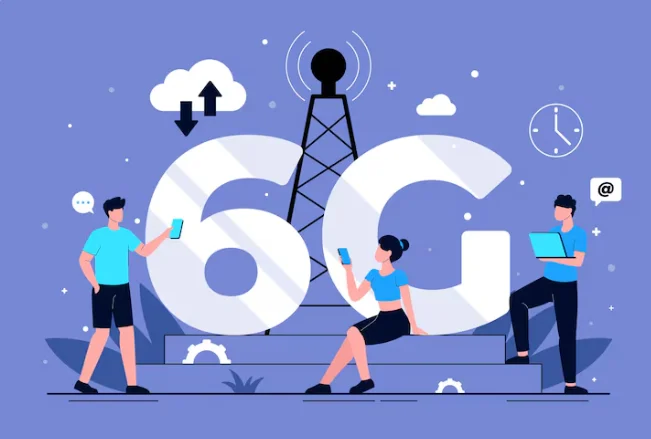Performance Marketing is the Next Big Thing in Business Growth Strategy – Here’s Why?

It’s been two years since the global pandemic took the whole world by storm, the aftershocks of which are far from being over. For many, COVID-19 was the worst nightmare in human history after the two world wars. But for enterprises, it turned out to be a blessing in disguise. For instance, online shopping received an explosive boost, followed by the rise of omnichannel marketing, which compelled businesses to start taking digital media seriously. According to the 2022 CMO Survey Edition, marketers who believe digital marketing is the future are happy to allocate 57% of their budget to internet marketing activities.
They have plans to increase their online ad spending by 16% in 2023. In fact, the global digital marketing market is projected to grow at a 9.1% CAGR between 2022 and 2027. However, digital marketing as an online advertising strategy is such a ubiquitous term. There is more to it than basic SEO, SMO., or PPC. Performance marketing being one such grey area has remained under the radar until now. And advertisers are gradually embracing the new thought – not just to keep their brands afloat in an increasingly brand-saturated market. Pyrite Technologies, an enterprise digital marketing agency, and others are experimenting with various performance marketing tactics to count each dollar spent on ads.
Why Performance Marketing – Reasons to Adapt the Change
Staying relevant and visible in the ever-evolving market are probably some of the biggest challenges enterprises face today. Altering product lines or services that align with customer preferences and recreating plans to merchandise them at a profit are a few instances to show the impact of customer dominance. Citing the pandemic as a point of reference, marketers realize conventional marketing strategies no longer appeal to the emotional fallacy of conscious buyers. This is because today’s buyers have evolved from their intent of ownership to use and prefer personalized experiences to noticeable marketing gigs. A transformation in demographics and people’s tastes implies there is no such thing as the stability of customers. Therefore, marketers need to create less noise with ads and promote messages that hit the right chord with the right set of audiences. Courtesy of data transparency, omnichannel marketing, and the power of the Internet, brands today are better positioned to optimize campaigns not aimed at an ‘average customer,’ which is nothing but a gross error. This is precisely where performance marketing as a strategy works. Here, campaigns are created keeping in mind the customer profile, and data is captured to make the message more personalized and relatable. And owners can utilize the marketing budget to scale their returns effectively.
What is Performance Marketing?
Today, the online market is spoiled for choices. It has emerged as a place where only the fittest can survive the competition. Or should we say the smartest of the lot? Needless to say, branding is the key. Meaning it is all about making your brand appear where and where your customers are – without making too much noise. But if your strategy works only to make noise and not driving customers to your site – how does it help your business?
Performance marketing allows advertisers to obtain measurable outcomes and pay only when their business objectives are met. It is a significant part of digital marketing directed toward acquiring and retaining customers for longer. The tactics trigger user reactions/transactions. Performance marketing is collaborative, fast-paced, and offers a vast scope for constant optimization, with outcomes being 100% measurable.
Why Do Businesses Need Performance Marketing?
Performance marketing opts for high-performing avenues to connect with end users, like social media and search engines. For instance, advertising on social media platforms like Facebook, Instagram, Twitter, and LinkedIn will effortlessly expand a brand’s reach across varied customer segments. As per statistics, nearly 73% of marketers agreed that by going social, they witnessed an increased acquisition of new customers in 2021.
On the other hand, content, the unsung king of digital marketing, builds website authority, attracts and retains user attention with thought-leadership pieces. Over 60% of digital marketers stated that content marketing strategy effectively churned more sales for their business in 2021. And at least 10% of them said it generates the most significant return on investment.
Hence, the journey of driving higher gains against every dollar spent starts with performance marketing. It encompasses all the channels mentioned above and many more to achieve business objectives measurably.
How to Measure Performance Marketing
Performance marketing is result-focused and ROI-driven, where every post, every strategy, and every execution can be tracked, monitored, and evaluated against specific KPIs. By tracking performance metrics from time to time, enterprise digital marketing agencies like Pyrite Technologies can estimate the overall impact of marketing on a company’s financial performance. It replaces gut-driven marketing tactics with meaningful, data-driven decisions.
Unlocking granular insights enable easy optimization of future campaigns for more significant outcomes.
CPM: CPM, also known as Cost Per Mille, measures the price advertisers are charged for 1000 impressions in a digital ad. However, it doesn’t reflect the actual actions taken by viewers from ads.
CPC: Ad Clicks measure higher engagement, where Cost Per Click (CPC) denotes the price charged on every click. CPC shows the overall performance of campaigns.
CPA: Cost Per Acquisition, aka CPA, demonstrates the actual campaign performance, which is evaluated against every dollar spent on ads. It is the most tangible metric for measuring campaign performances against pre-defined KPIs.
LTV: LTV is a measuring metric used to evaluate a customer’s expected lifetime value. It estimates the expected spending of acquired customers against their ongoing activities and interactions with the company and its services. As a result, LTV helps marketers to plan their future campaigns based on their targeted ROI.
Types of Performance Marketing
Performance-based marketing is a generic term referring to popular online advertising types leveraged by businesses to boost brand performance on digital media.
YouTube Video Campaigns: Being the second-most popular social media channel hosting 2.6 billion users worldwide, YouTube gets over 30 million visitors daily. There’s an ocean of opportunities to monetize in terms of viewers. Video campaigns on YouTube can provide excellent brand traction and expand their reach.
Native Video Clips: Unlike display or banner ads, native ads in the shape of video clips don’t appear like ads. These ads are fed dynamically based on each user’s previous content views. If optimized effectively, native ads can easily communicate the brand message and intent without spamming them.
Search Campaigns: Search campaigns appear as text ads on Google SERPs when prospects actively looking for similar products or services online. Search ads are ideal for driving website traffic, attracting high-quality leads, and boosting sales.
Acquisition Campaigns: Yet another proven performance marketing type where campaigns are more focused on promoting the products/services to new audiences. Usually, various high-performing channels are targeted to share sponsored content using organic tactics like SEO, SMO, and offline and online advertisements. An acquisition campaign is generally followed by a retention strategy to re-engage existing buyers.
Conversion Campaigns: This particular performance marketing type allows marketers to easily measure campaign performance based on the total number of leads generated, the cost incurred per lead, the rate of conversion, and its progress over time. Such campaigns are directed towards drawing user attention with action-inducing content and creatives.
Top Channels in Performance Marketing
Some channels drive more site traffic, while others concentrate on amplifying brand presence. Which channels will work best is a tough choice to make. And numerous pathways to optimize and launch high-performing campaigns are easily measurable.
SEM: Search Engine Marketing as a performance marketing channel is essential because most online searches are done using popular search engines like Google and Bing. The intent is more toward getting maximum clicks for native ads and measuring their performances using metrics like CPC. However, organic activities are also carried out alongside paid campaigns to capture more eyeballs. Content marketing and SEO-optimized landing pages are the standard organizational tools to boost brand performance.
Native advertising: It has the natural appearance of a web page or site when promoting sponsored content. Native ads are most popular among eCommerce businesses, where the sponsored content appears live beside other organic content. Users cannot differentiate between these kinds of content; hence, promoting a brand is easy.
Affiliate channels: Affiliate channels or networks usually comprise a group of associated companies that offer compatible or complementary products for sale. An affiliate network operates as an intermediary between affiliates and merchants. With the help of affiliate performance marketing tactics, both partners can benefit from increased site traffic and quality leads. And affiliates get paid for every click or download from the partner merchant.
Social media: This is the ultimate channel to primarily engage the new customer segment, Generation Z. Social media platforms offer numerous benefits, from alluring a wider audience and driving them to the home site, and getting conversion through paid campaigns. Social media activities are always measurable, regardless of whether they are paid or organic.
Performance Marketing Strategy
Simply put, in performance marketing, advertisers place their ads strategically on a given channel and pay based on how those ads perform. But the key differentiator lies in how the campaigns are planned, designed, and executed. Regardless of types and channels, the following steps are listed to obtain maximum tangible results.
Campaign goals: Without specific goals and objectives, there is no metric to measure campaign performance. Setting goals before launch is paramount since many ad platforms require advertisers to establish goals before setting up campaigns.
Digital channels: An equally important step is to shortlist digital media to direct marketing efforts. In performance marketing, spreading activities across a diversified network of digital channels will garner positive results than targeting efforts exclusively on one channel.
Create campaigns: Identifying the target audience, understanding their pain points and desires, and tailoring ads and messaging to address those needs and grab attention are vital parameters to focus on while creating performance marketing campaigns. A good understanding of targeted audience segments helps make the best ad creatives and content that easily resonates with the end users.
Launch campaigns: Before moving ahead with the campaign launch, it is advisable to re-evaluate creatives for technical attributes, such as ad sizes, copy character limits, and acceptable images, as per channel-specific requisites.
Measure performance: Performance campaigns generate data as soon as they are up and running. Hence, constant tracking and monitoring of each ad performance against pre-defined metrics will offer granular insights for further optimization.
Optimize campaigns: With the help of data generated, it is easier to gain visibility into the sources that are performing best and developing higher traffic. By identifying high-performance channels, audiences, and objectives, campaigns can be improved to increase ROAS.
Address pitfalls: There are potential pitfalls and challenges with performance marketing. A few of these are brand safety, compliance-related issues, privacy regulations, placement transparency, and others. One ideal way to remediate such pitfalls is by targeting high-quality advertising networks and platforms that responsibly handle brand safety and data privacy.
Benefits of Working with a Performance Marketing Agency
Outsource or not to outsource – a massive decision indeed for enterprises when so much is at stake. One wrong step and its impact is felt far and deep, affecting the brand’s image and financial performance.
Nevertheless, hiring a performance marketing agency has its fair share of benefits.
Laser focus: Most agencies have years of market experience and are usually paid for their intelligent marketing solutions. They will address your marketing needs with a laser focus, which might not be possible when using the in-house team as the latter has too many tasks to cater to on their plate at the same time.
Expertise and experience: Performance marketing agencies are hired based on their knowledge and years of experience. Learning about their past experiences as an agency is much easier today. Based on their proven expertise, one can pass on the responsibility of handling marketing objectives.
Niche specialization: Most agencies are well-adept at working across multiple industries and sectors. They will better understand your niche and can take your efforts to the next level.
Access to resources: An agency works as an extended team. They provide the best resources with many years of experience tailoring performance marketing strategies for various clients.
Customer service is vital for any business seeking to scale its growth with stellar performance-based marketing solutions. Be it technical support, sales guidance, or account management, an experienced agency can have them all covered on behalf of their client.
Continuous support: To obtain maximum results from your marketing initiatives, constant and ongoing support is needed. An agency can give its undivided attention to monitoring and optimizing campaigns for improved results on its clients’ behalf.
Unbiased approach: Unlike the in-house team, an agency can have an honest approach toward a brand’s campaign objectives. They can begin with a clean slate and address their client’s requirements without conflict of interest or disagreements.
Reports and analytics: An agency will always make time to monitor campaign performances, generate reports, and improve them with the help of data and analytics. Contrarily, an in-house team might have to deviate their attention to other higher-priority tasks; hence, capturing insights in real-time will not always be possible without constant monitoring.
In a Nutshell
Performance-based advertising offers a win-win game for digital marketers and calls for more efficient campaigns where each dollar invested brings a positive return. This go-to-marketing strategy provides ample scope to play around with different marketing tactics and drive optimum results while paying only for the measured outcome. In addition, it increases customer acquisition and retention rates from effective and budget-friendly ad campaigns.

The Hidden Business Power of Storytelling Through Books

Diamond Painting Apps & Digital Tools for 2025 Artists

Pallet Wood Sourcing: Ethical and Sustainable Practices

Accelerating drug discovery through the DEL-ML-CS approach

AI in Marketing Is No Longer a Buzzword — It’s the Strategy

The Full Guide To Penetration Testing

Pixel 10 Pro Fold Case: Why Choose Aramid Fiber?

MT4 for Mac vs Windows: Which Version Works Better for Traders








